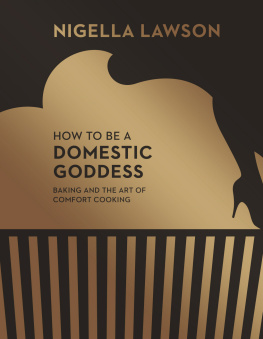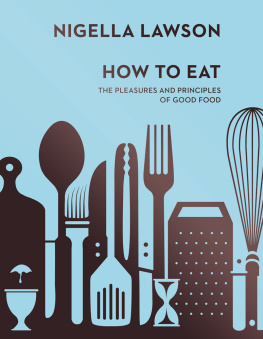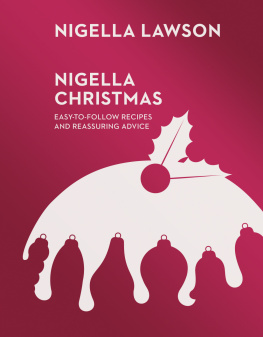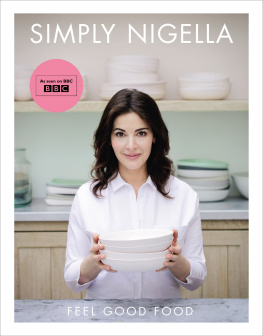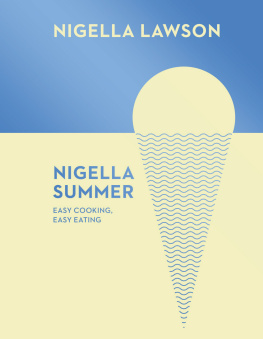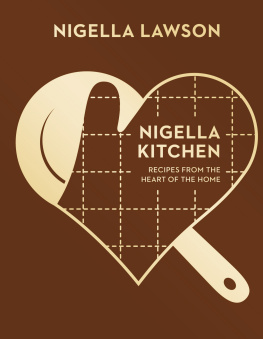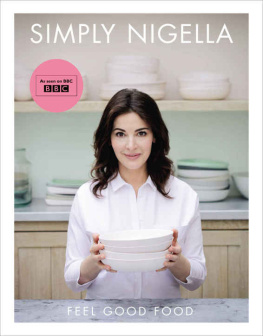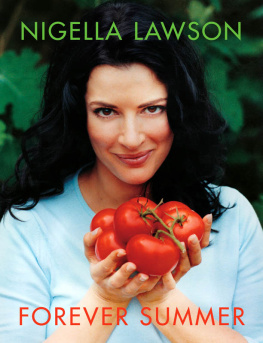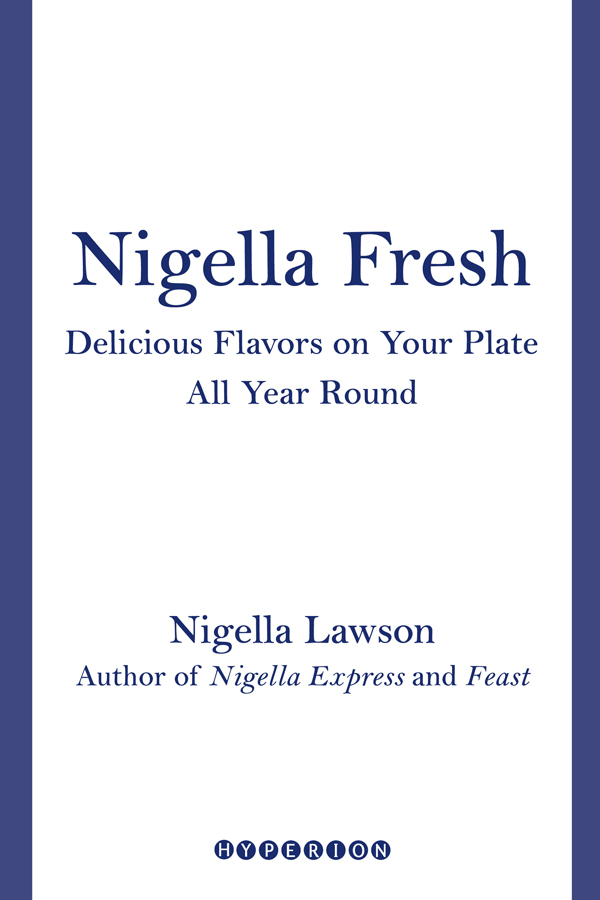

Copyright 2003, 2010 Nigella Lawson
Photos Petrina Tinslay
Landscape photos Art Directors and Trip Photo Library
FORMERLY PUBLISHED AS FOREVER SUMMER 2003
All rights reserved. Except as permitted under the U.S. Copyright Act of 1976, no part of this publication may be reproduced, distributed, or transmitted in any form or by any means, or stored in a database or retrieval system, without the prior written permission of the publisher. For information address Hyperion, 1500 Broadway, New York, New York 10036.
The Library of Congress has catalogued the original print edition of this book as follows:
Lawson, Nigella
Forever summer / Nigella Lawson; photographs by Petrina Tinslay.1st ed.
p. cm.
Includes index.
ISBN 1-4013-0016-2
1. Cookery. I. Title.
TX714 .L393 2003
641.5dc21
2002032853
Nigella Fresh ISBN (print book): 978-1-4013-1042-4
eBook Edition ISBN: 978-1-4013-0616-8
First eBook Edition
Hardcover edition (Forever Summer) and paperback edition (Nigella Fresh) printed in the United States of America.
www.HyperionBooks.com
Ms. Lawson brings to life the sensual aspects of cooking, helping you understand not only what you are after, but also the pleasure of the journey.
New York Times
Nigella is an icon; a smart sexy woman who promulgates the idea that it might be fun or even relaxing to make time to cook again.
Gourmet
Nigellissima
Easy Italian-Inspired Recipes
Nigella Fresh
(formerly Forever Summer)
Delicious Flavors on Your Plate All Year Round
Nigella Christmas
Food Family Friends Festivities
Nigella Express
Good Food, Fast
How to Eat
The Pleasures and Principles of Good Food
How to Be a Domestic Goddess
Baking and the Art of Comfort Cooking
Feast
Food to Celebrate Life
Nigella Bites
From Family Meals to Elegant DinnerEasy, Delectable Recipes for Any Occasion
In the ideal world inhabited by the chef, there may indeed be a place for the lyrical insistence on using only those ingredients that the month in hand offers up to the marketplace, but my kitchen, my home, the way I cook, resist such purist strictures. For much as I love the idea of wandering out to the shops, basket dangling from my arm, to gather each new seasons freshly ripened produce, I have neither the time to shop that way, nor the disciplineand, frankly, I balk at such loftily imposed restraints. I shop and cook much as I eat, with greedy opportunism.
Seasonal cooking is anyway better suited to those who live in sunnier climates. The rest of us need to make the most of what warmth is offered, and much of the time this has to emanate from the kitchen rather than from the skies outside. Summer, then, is an idea, a memory, a hopeful projection. Sometimes when its gray outside and cold within, we need to conjure up the sun, some light, a lazy feeling of having all the wide-skied time in the world to sit back and eat warmly with friends. I am not talking about creating some overblown idyll of perpetual Provenal summer, but of extending that purring sense of sunny expansiveness.
Summer food, even when eaten in deepest winter, contains within it the idea of simple cooking. But the best recipes are never blueprints, only ideas hungrily mooted. The ones in this book have come to me the way they always do, plundered from friends, from family, grown out of an idea of what might go with what. As the Australian food writer Maggie Beer has written, cooking is all about osmosisa mental note made about a flavour combination or a technique, a memory of a dish. Cooking is not just about applying heat, procedure, method, but about transformation of a more intimate kind; none of us cooks without bringing our own character to bear on the food in front of us. Just as the recipes that follow have been toyed with, changed, fiddled with to become my food, so I expect them to be remodeled in your own kitchen.
I have only one rule when I decide what to put in, what to leave out. However successful a kitchen experiment might seem to be, if I dont feel the urge to cook something again, and soon, I ditch it. The one-time spectacular is not my style, nor ever could be. And, if at any time Im still wondering if this or that particular recipe is worth keeping, I set myself a scene: a friend, a reader, a fellow mother at the school, is coming up to me, telling me that tonight shes going to cook my If Im not filled with impatient, evangelical enthusiasm at the imagined exchange, if that recipe doesnt inspire that same, unwavering, bossy confidence, then out it goes. I want to write only about the food I love, and I want you to love it, too.
Life has its difficulties, why add to them in the kitchen? And for all that my title archly conjures up that starlets gushing hopefrom the premiere scene in Singin in the Rainthat if Ive brought a little cheer into your humdrum little lives, it aint all been in vain for nothin, it is not because I believe there is nothing but endless, unclouded blue sky in Nigellaland, but because I still believe the kitchen is not a place you escape from, but the place you escape to.
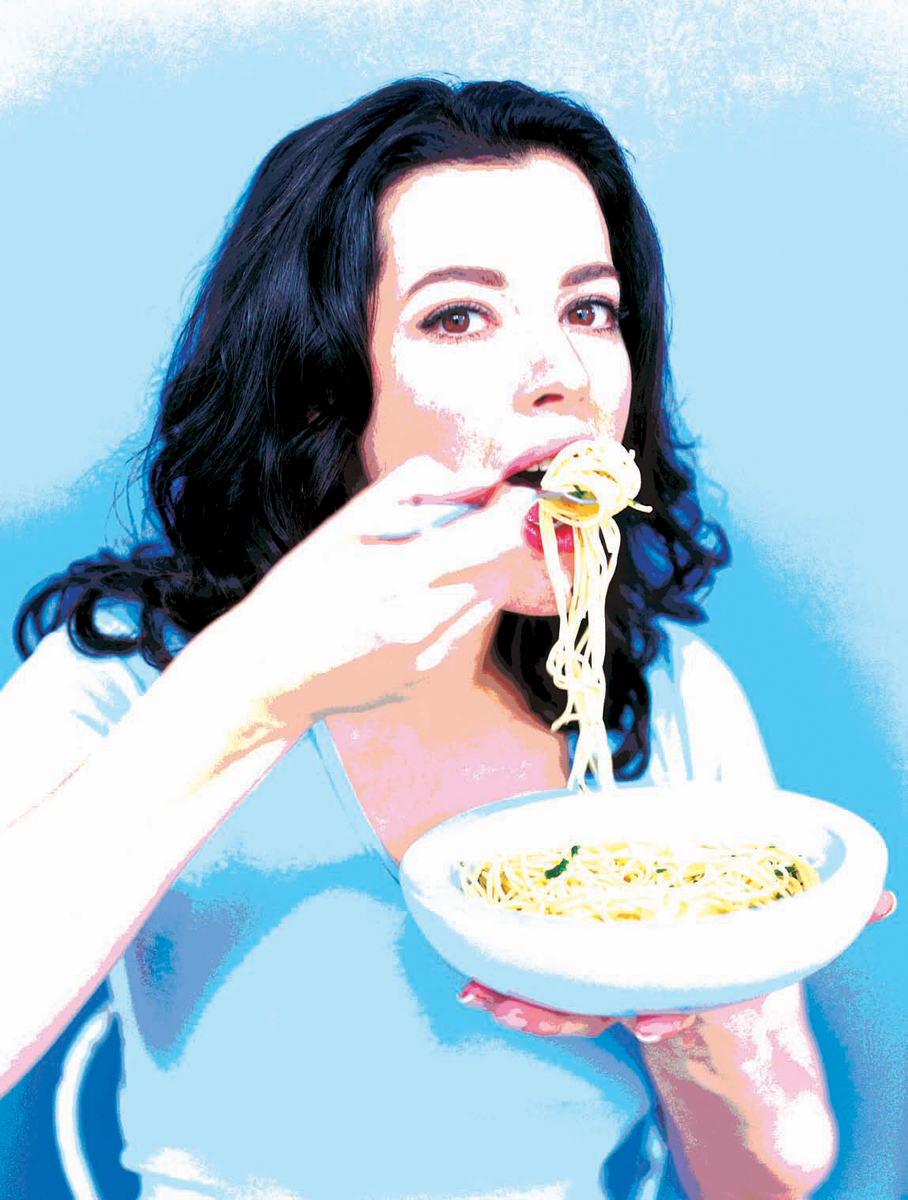
Ive been harboring a memory of these for eight years now, but this is the first time Ive actually cooked them myself. I came across them while I was on holiday in Porto Ercole in Italy, at a little restaurant called Il Greco over the way in Porto Santo Stefano. I sat by the waters edge, voluptuously savoring the menu while the waiters brought plates of lozenge-shaped toasts covered with the still warm meat of finely chopped mussels and clams, deep with garlic and sprinkled with parsley. It was when I was cooking the pasta with mussels for this book that the briney, winey smell of the steaming seafood made me desperate to recreate these. And yes, theyre fiddly, but so very, very good.
You will have a little pool of marine juices left after youve chopped and smeared the seafood for the crostini and the best way I can think of for using this up is to dunk the remaining half of your French loaf straight into it and slurp it all up. You can of course, though, just bag it up as it is and freeze it so you have a small but concentrated stash of deep-scented fish stock to use at some later date. And once you get into the habit of crostini-production (and I find I do), you might find it easier anyway to buy a baguette, or ficelle (either will do), slice it and bag it up and keep it in the freezer to be oil-dabbled and toasted whenever you want.
Half a skinny baguette (in other words, a ficelle)
approx. 4 tablespoons olive oil
2 cloves garlic, minced
2 tablespoons finely chopped parsley, plus more to decorate
2 tablespoons olive oil
1 pounds mussels
18 ounces littleneck or Manilla clams
1 tablespoon vermouth or white wine
Preheat the oven to 400F. Cut the bread into slices, about to inch thick: in other words, neither too thick, nor too thin. You need about 25 slices for the amount of chopped seafood topping here. Using a pastry brush or your fingers, dab the bread, on both sides, with the olive oil and sit these lightly oil-brushed slices on a rack over a roasting pan and bake for about 510 minutes, turning once. Frankly, its just a matter of cooking until the slices begin to turn gold, and this takes more time the fresher the bread. In other words, if youve got stale bread, use it for this. When the bread is toasted and gold, remove it from the oven and leave it to cool while you get on with the mussels and clams.



